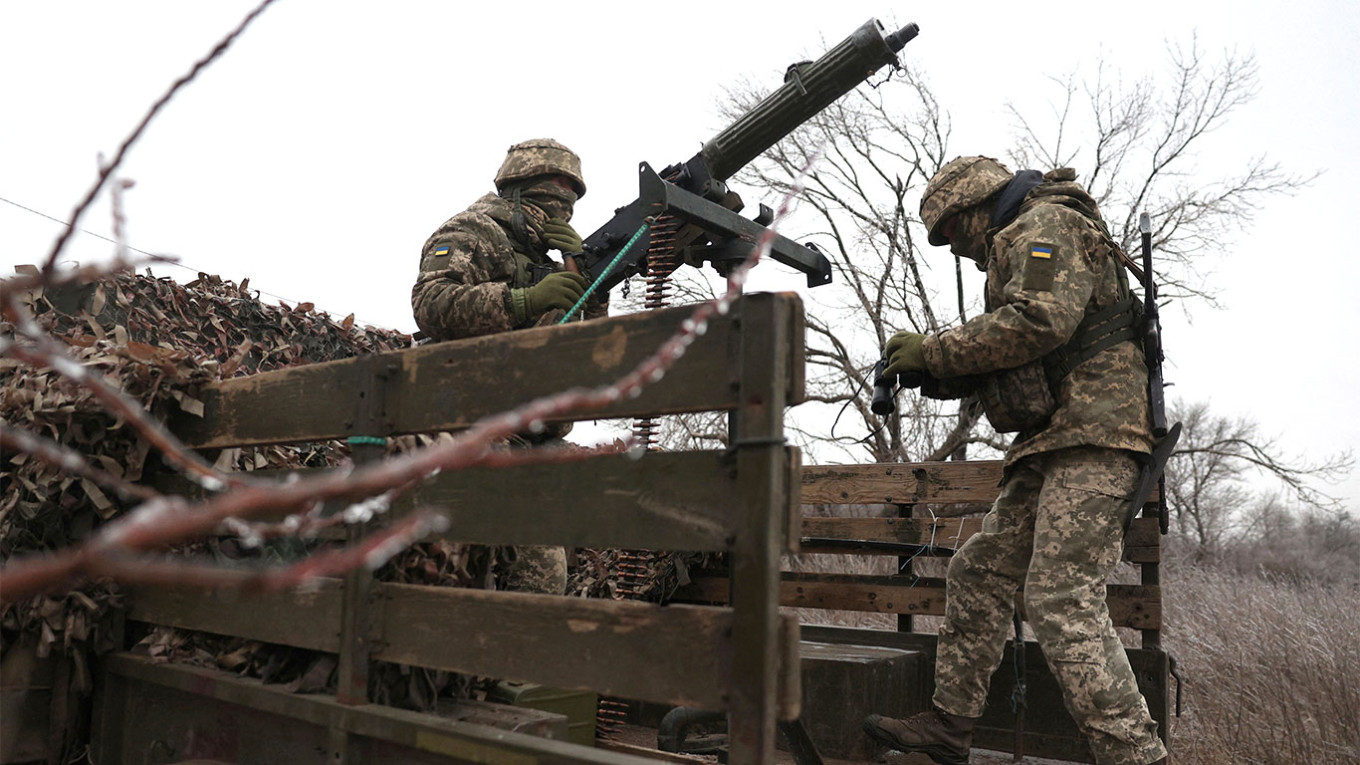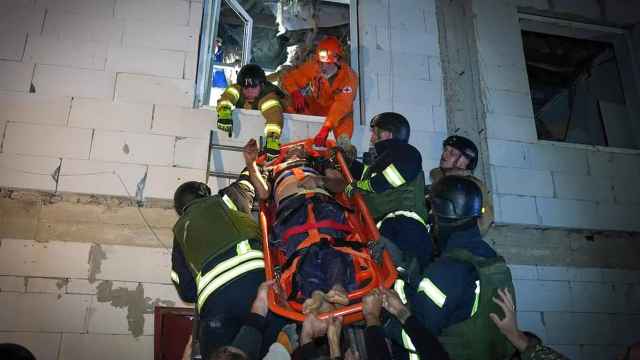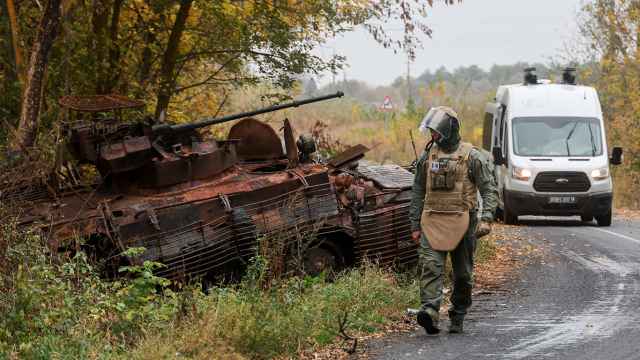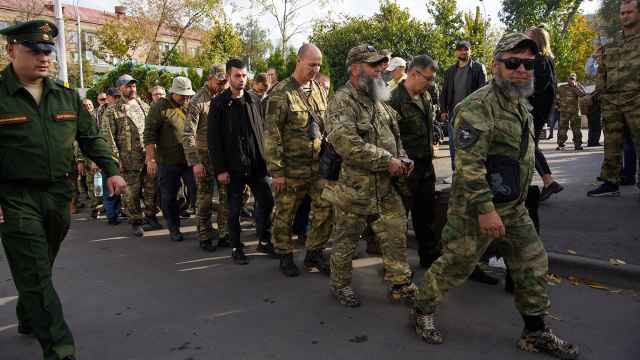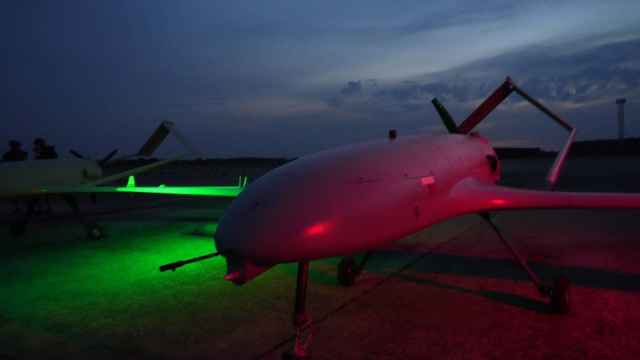Russia’s nearly two-year war in Ukraine is likely to continue as a drawn-out war of attrition in 2024, with neither side expected to make major territorial gains, military analysts have told The Moscow Times.
The Russian army, despite its firepower and personnel advantages, lacks the resources to achieve a decisive breakthrough in Ukrainian-held areas, resulting in slow tactical progress.
And Ukrainian forces, outgunned and outnumbered, are forced to maintain a defensive posture, seeking to minimize casualties while rebuilding combat capacity.
Any future Ukrainian offensive is heavily dependent on securing long-term military support from its allies. Moreover, without U.S. military aid, it is unclear how long Kyiv’s forces will be able to hold off the Russian advance.
Here is an overview of the current situation in key frontline areas:
Avdiivka, Donetsk suburbs
The battle for Avdiivka — a city near the occupied city of Donetsk with a pre-war population of about 30,000 — escalated in early autumn 2023, when it became the focal point of Russia’s winter offensive.
The fighting here — which is often compared to last year’s battle of Bakhmut, with Russian troops making incremental gains at the price of heavy losses — is more intense than anywhere else on the frontline.
“Over a half of the clashes that happen on a daily basis on the frontline are in the area of Avdiivka,” Israeli military analyst David Gendelman told The Moscow Times, citing open-source data.
Following the escalation of the Russian offensive in early October, Moscow’s troops have been making significant advances, especially in the southern and northern outskirts of the city. The threat of encirclement is becoming increasingly real for Kyiv’s forces.
In late January, Russian reconnaissance groups reached the rear of Ukraine’s defense lines in the city’s south by reportedly traversing an underground pipe and capturing a forested park area south of the city.
In recent days, Russian forces have gained ground in the northeast of the city, positioning themselves just a few hundred meters from Industrialny Prospekt, a critical supply artery for Ukrainian troops.
The road is now under Russia’s fire control, making supplies increasingly difficult.
The head of Avdiivka’s military administration Vitaly Barabash said Tuesday that fighting is now taking place within the city itself and the situation is becoming “critical” for the Ukrainian defenders.
In particular, Ukrainian forces are short on ammunition. Ukrainian officials have admitted the ratio of artillery fire is five to one in favor of the enemy.
Even if Russian troops completely block the main supply route, other smaller roads can still be used to supply troops for some time, analysts said.
“Of course, that won’t be enough for a sustainable defense,” Dmitry Kuznets, a military analyst with the independent Meduza news website, told The Moscow Times.
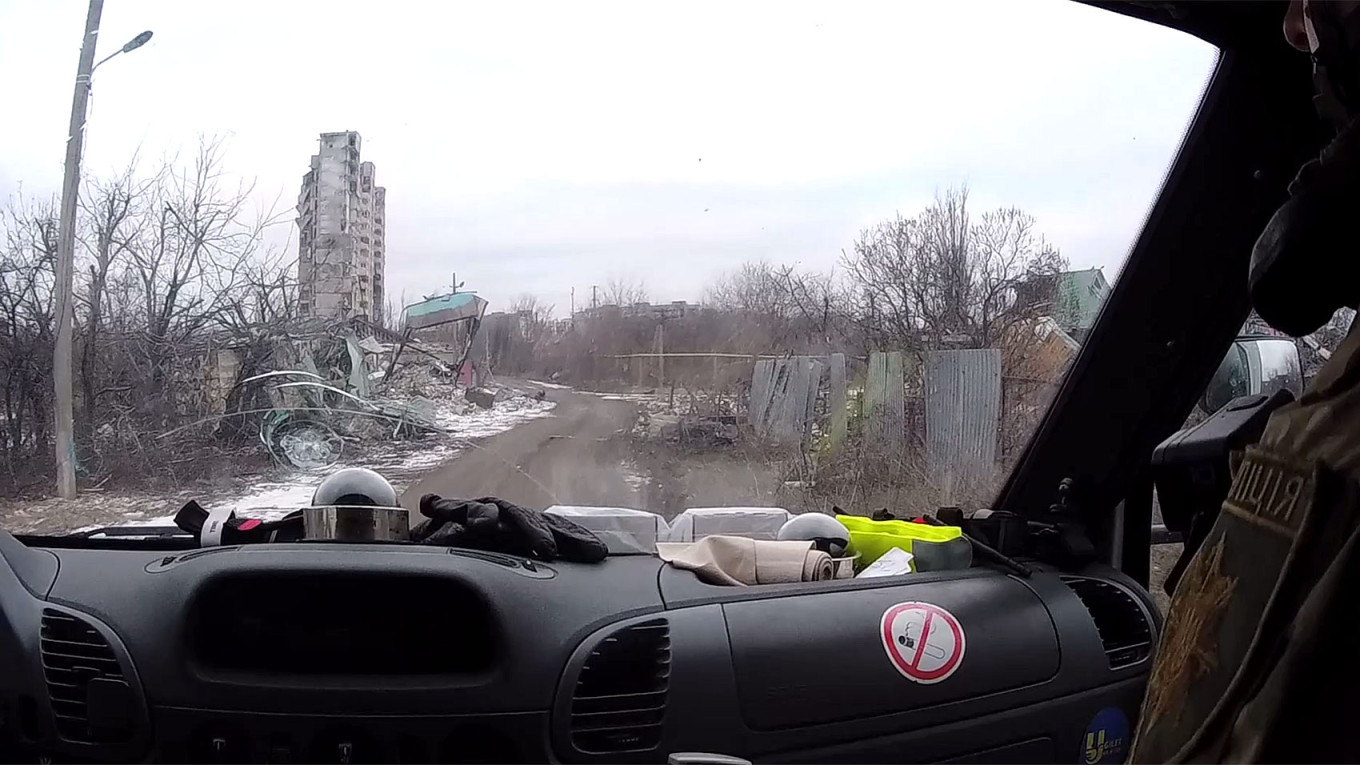
Some analysts said it is only a matter of time until Avdiivka falls.
“If they [Ukraine] manage to hold for one more month, it’s very good for them,” said Kuznets.
Gendelman said this will mainly depend on how many reserves the Ukrainian command is willing to deploy for the city’s defense.
“The question is, will they continue sending resources there until the very end or will they withdraw?”
Ilya Abishev, a military analyst for the BBC Russian service, said he was more optimistic regarding Ukraine’s ability to defend the city.
“They can continue for quite a long time, considering that defending troops suffer far fewer casualties than those attacking,” he told The Moscow Times.
If captured, Avdiivka would be the first major city taken by the Russian army since the conquest of Bakhmut in May 2023 and it carries a strong political significance for the Kremlin.
In practical terms, by capturing the town, Russian forces would push the frontline further from Donetsk, thus potentially reducing Ukrainian shelling on the Russia-held city.
Not far from Avdiivka, fierce fighting continues in the western suburbs of Donetsk city, with Russian troops having reached the eastern part of the village of Heorhiivka.
Bakhmut
Since last summer’s Ukrainian counteroffensive achieved minor results near Bakhmut, Russian forces have retaken the initiative and redirected their efforts westward towards the city of Chasiv Yar.
In recent weeks, they have managed to advance in the villages of Bohdanivka, Ivanivske and Klishchiivka, respectively in the west, northwest and southwest of Bakhmut.
Analysts said that Russian progress toward Chasiv Yar is hindered by the challenging terrain, with Ukrainian defensive positions strategically located on higher ground.
“After pushing the Ukrainian forces [onto] those hills, their [Russia’s] offensive has stalled,” Kuznets said.
Ukrainian forces have had months to strengthen their defense lines between Bakhmut and Chasiv Yar, Abishev said.
“The threat to Chasiv Yar was much more serious when Russia had just conquered Bakhmut,” the analyst noted.
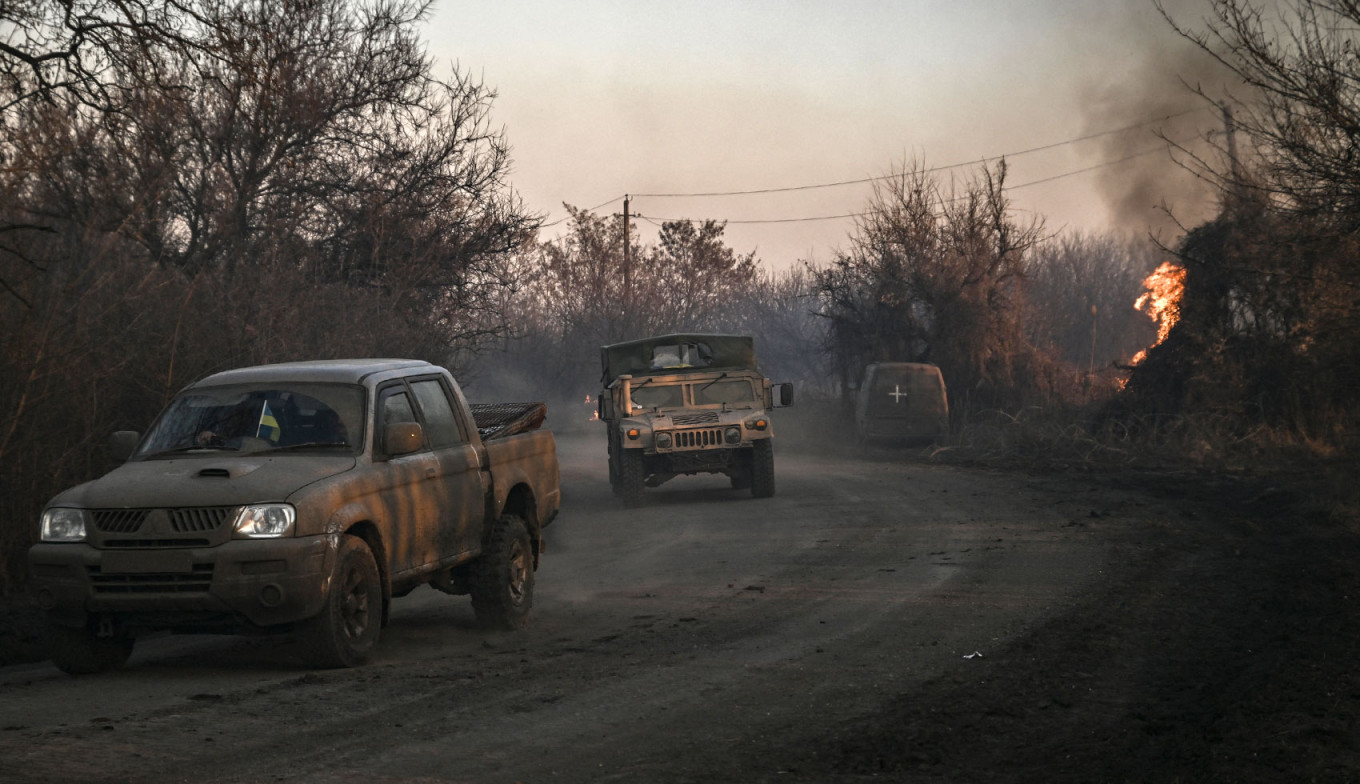
Kupiansk-Svatove-Kreminna line
Russian troops have been making gains in the northwest Kharkiv region in recent weeks, reportedly capturing the villages of Tabaevka and Krakhmalnoe.
Russian troops are pushing west, aiming to reach the Oskil River and capture Kupiansk, an important communication hub that was liberated by Ukrainian troops in late 2022.
According to analysts, Russia seeks to force Ukrainian troops to retreat to the western bank of the Oskil River, which will make any future offensive attempt by Kyiv’s forces more difficult.
“That would allow Russians to deploy large forces on other fronts,” Kuznets said.
However, analysts noted that Russian advancements in this area are slow, and it doesn’t look likely they will reach the river anytime soon.
“Judging from the current tempo of the advancement, it could take years,” Kuznetsk said.
Even though they managed to reach the Oskil River, further advances will be difficult given the natural obstacle it poses.
“Assuming they have enough ammunitions and reserves, the Ukrainian forces have every chance to hold back the advance,” Kuznets argued.
Russian forces’ possible success in the Kupiansk direction does not pose a direct threat to the regional capital Kharkiv, analysts agreed.
Following intensified Ukrainian shelling on Russia’s neighboring Belgorod region in December, pushing the line of contact further from the border has become a priority for Moscow.
President Vladimir Putin recently mentioned the need to create a buffer zone to protect Russian border towns from long-range enemy strikes.
However, information about Russian forces being deployed in the Belgorod region does not indicate an imminent offensive on Kharkiv city.
“Much more significant forces would be needed” to attack Kharkiv, Kuznets said.
Southern Ukraine
The frontline in the southern Donetsk and Zaporizhzhia areas has remained mostly unchanged since last summer when the Ukrainian counteroffensive was ground to a halt by Russia’s multi-layered defenses.
Here, positional engagements continue without significant territorial advances from either side.
In the neighboring Kherson region, a relatively small number of Ukrainian forces has held a foothold in the village of Khrinki, a narrow strip of land on the left bank of the Dnipro River.
Since October 2023, Russian forces have been relentlessly shelling the bridgehead and targeting Ukrainian boats transporting supplies across the river, preventing Kyiv's forces from advancing further. Despite the constant attacks, the Ukrainian army has managed to preserve its foothold in the village, now reduced to rubble.
Analysts questioned the rationale behind maintaining such a precarious position, citing the high casualty toll and a lack of prospects for further offensive actions.
“Unless the Russian resistance will significantly weaken for some reason, it’s impossible to imagine how this bridgehead can be used to carry out an in-depth offensive,” Kuznets argued.
Others interpreted it as an attempt to keep Russia’s large Dnepr Grouping occupied so it cannot be deployed to other parts of the front.
“The bridgehead is drawing quite significant Russian reserves,” Gendelman said.
According to Abishev, Russia needs to deploy large forces to the area to prevent the formation of more similar bridgeheads across the Dnipro River.
“They need to hold all this line, scatter their forces and be in quite unfavorable positions,” he said.
The big picture
Most analysts agreed that 2024 is set to play out as a war of attrition without substantial territorial shifts.
Ukraine lacks the necessary resources to plan, let alone carry out an offensive until it secures long-term, predictable military aid from its allies.
“In the [coming] months, they’ll have to think about defense,” Gendelman said.
Division in the U.S. Senate has so far prevented the approval of a $60 billion military aid package for Ukraine. Without American aid, Ukrainian forces will be slowly overwhelmed in the coming months, analysts told The New York Times.
In particular, a shortage of air-defense missiles would allow Russia to increase its so-far limited deployment of aviation on the frontline, analysts at the Institute for the Study of War think tank warned.
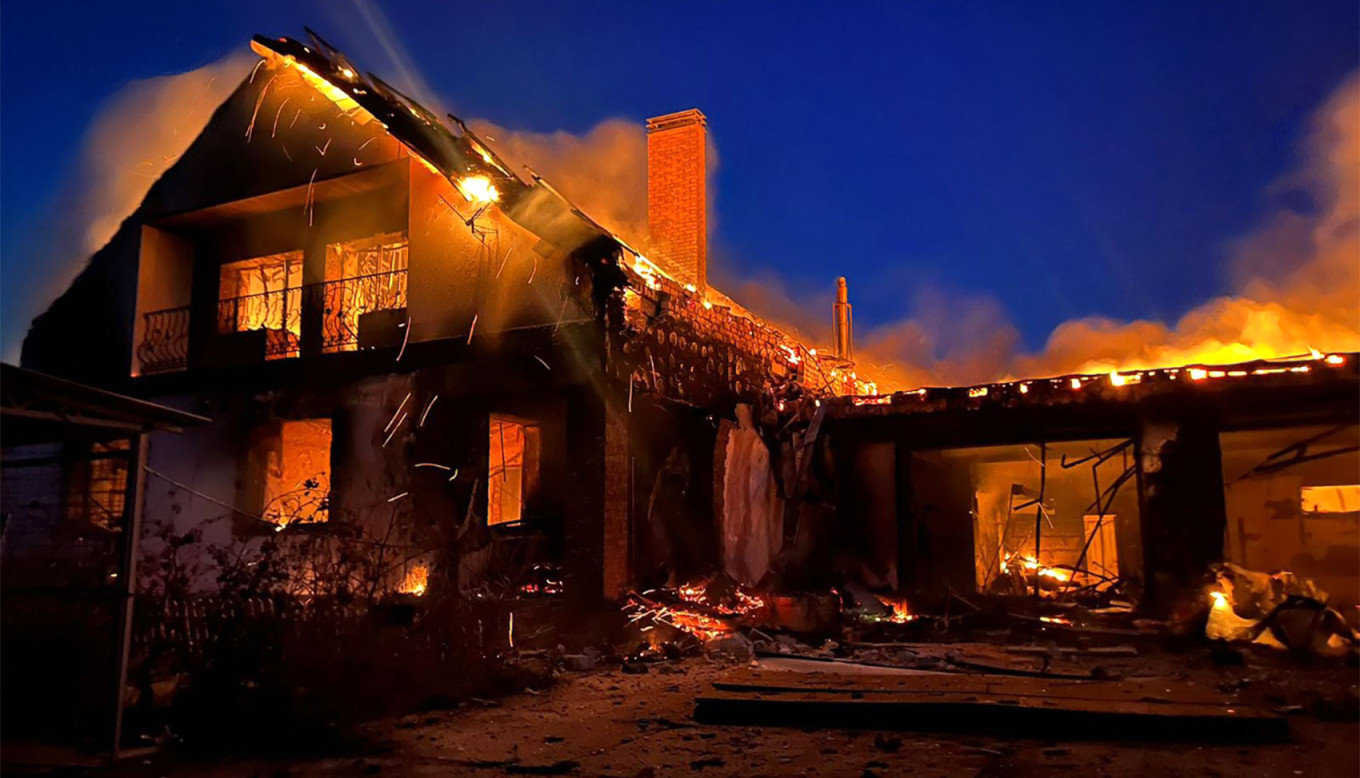
Currently, however, major Russian breakthroughs are unlikely given insufficient troops and weaponry.
“If they had 1 million more well-equipped troops, the situation would be completely different,” Kuznetsk said. “But there is no such possibility.”
“Russia lost a huge amount of armored vehicles,” Abashin noted. “Despite current attempts to restore production, they are forced to redeploy old models.”
Analysts said that the unprecedented use of drones, both for reconnaissance and offensive purposes, is complicating the execution of large-scale mechanized offensives.
“Means of intelligence have reached such perfection that a high concentration of forces and weaponry does not give any superiority to the attacking side,” Abishev said. “On the contrary, the enemy can bomb and shoot at large strike groups concentrated in one spot.”
“Each attempt of large attacks with the usage of armored vehicles leads to heavy losses,” Kuznets agreed.
He said Russia's primary objective is not to capture large territories but to inflict significant damage on the enemy’s combat capabilities.
“Russia is trying to use its superiority in terms of manpower, means and ammunitions to wear down the Ukrainian troops, forcing them to defend themselves in unfavorable conditions,” Kuznets said.
While defensive positions may result in fewer losses, Kyiv's army, experiencing a manpower shortage, remains sensitive to casualties.
“What are serious losses for Russia can be catastrophic for Ukraine,” Kuznets said.
A Message from The Moscow Times:
Dear readers,
We are facing unprecedented challenges. Russia's Prosecutor General's Office has designated The Moscow Times as an "undesirable" organization, criminalizing our work and putting our staff at risk of prosecution. This follows our earlier unjust labeling as a "foreign agent."
These actions are direct attempts to silence independent journalism in Russia. The authorities claim our work "discredits the decisions of the Russian leadership." We see things differently: we strive to provide accurate, unbiased reporting on Russia.
We, the journalists of The Moscow Times, refuse to be silenced. But to continue our work, we need your help.
Your support, no matter how small, makes a world of difference. If you can, please support us monthly starting from just $2. It's quick to set up, and every contribution makes a significant impact.
By supporting The Moscow Times, you're defending open, independent journalism in the face of repression. Thank you for standing with us.
Remind me later.



